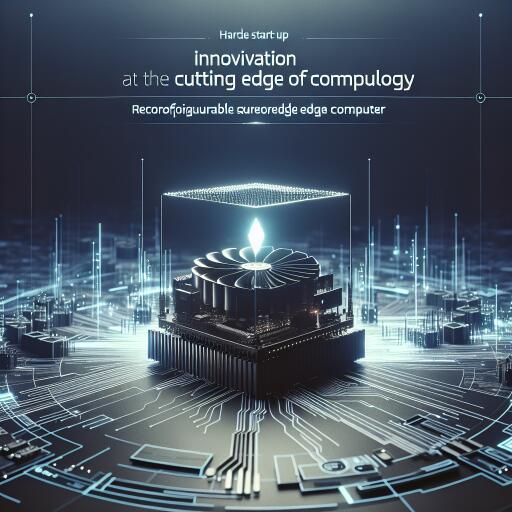Innovation At The ‘Edge’: Hardware Start-Up Vicharak Pioneers The Reconfigurable Edge Computer; And Reshapes Computing As We Know It
The technological landscape is being reshaped by a groundbreaking initiative from the Surat-based hardware start-up, Vicharak. Introducing Vaaman, their inaugural edge computing board, Vicharak is setting a new standard in the realm of computing with a device that boasts versatility, high performance, and compactness. This innovation is not just a leap forward for Vicharak but marks a significant shift in computing paradigms as a whole.
Vaaman is designed to cater to a wide audience ranging from software developers, researchers, hardware designers to hobbyists interested in robotics, home automation, and a plethora of DIY electronics projects. Its operational premise is rooted in edge computing, which emphasizes processing data closer to its source, bypassing the latency and inefficiency associated with data transmission to distant centralized cloud services or data centers.
By embedding computing processes closer to data origin, Vaaman enhances the efficiency of data handling, significantly reducing latency. The device emerges as a pivotal tool in a variety of advanced technological applications including drones, robotics, autonomous vehicles, machine vision, and the broader realm of the internet of things (IoT).
Edge computing, as facilitated by Vaaman, is primarily concerned with the immediate, local analysis and processing of data. This is achieved through its advanced integration of a central processing unit (CPU) and a field programmable gate array (FPGA), distinguishing Vaaman with capabilities such as hardware acceleration of specific tasks like video processing and encryption/decryption.
The beauty of FPGA technology lies in its reconfigurability, enabling the hardware to adapt to various needs even post-manufacture, thereby bridging the gap between hardware flexibility and software demands. Vaaman stands out with its six-core ARM CPU and an FPGA boasting 112,128 logic cells, providing robust support for parallel computing and hardware acceleration.
Vaaman’s design is inclusive of a wide array of interfaces including PCI, HDMI, USB, and more, offering unparalleled flexibility and making it a universally applicable solution for numerous challenges faced in the current technological landscape.
The device’s efficacy lies in its ability to leverage parallel processing and reconfigurability for tasks such as real-time object categorization, human presence detection, visual data processing for quality control, and efficient cryptographic algorithm processes, to name a few.
Vaaman’s journey from conception to the hands of beta testers has been one marked by an ambition to go beyond traditional computer architectures. Inspired by the limitations of the Von Neumann architecture and Moore’s Law, Vicharak seeks to transcend these boundaries with its innovative approach to computing. The Von Neumann bottleneck, a limitation due to the separation of CPU and memory, and the anticipated end of Moore’s Law’s predictive power due to physical and technological limitations, necessitate a reimagining of computing infrastructure.
Responding to this need, Vicharak introduces the Adaptive Parallel Processing Compute Architecture (APPA), aiming at a computing future where hardware dynamically adapts to the software’s requirements. This move not only proposes a solution to prevailing computing challenges but also pioneers a flexible, efficient, and sustainable path forward in computing technology.
In essence, Vicharak’s Vaaman embodies a paradigm shift towards a more adaptable, efficient, and interconnected computing future. As the company continues to dispatch Vaaman for versatile applications, it’s clear that this innovation is not merely a product launch but a bold step into the future of computing, promising to redefine how we process, analyze, and utilize data in an increasingly digital world.










